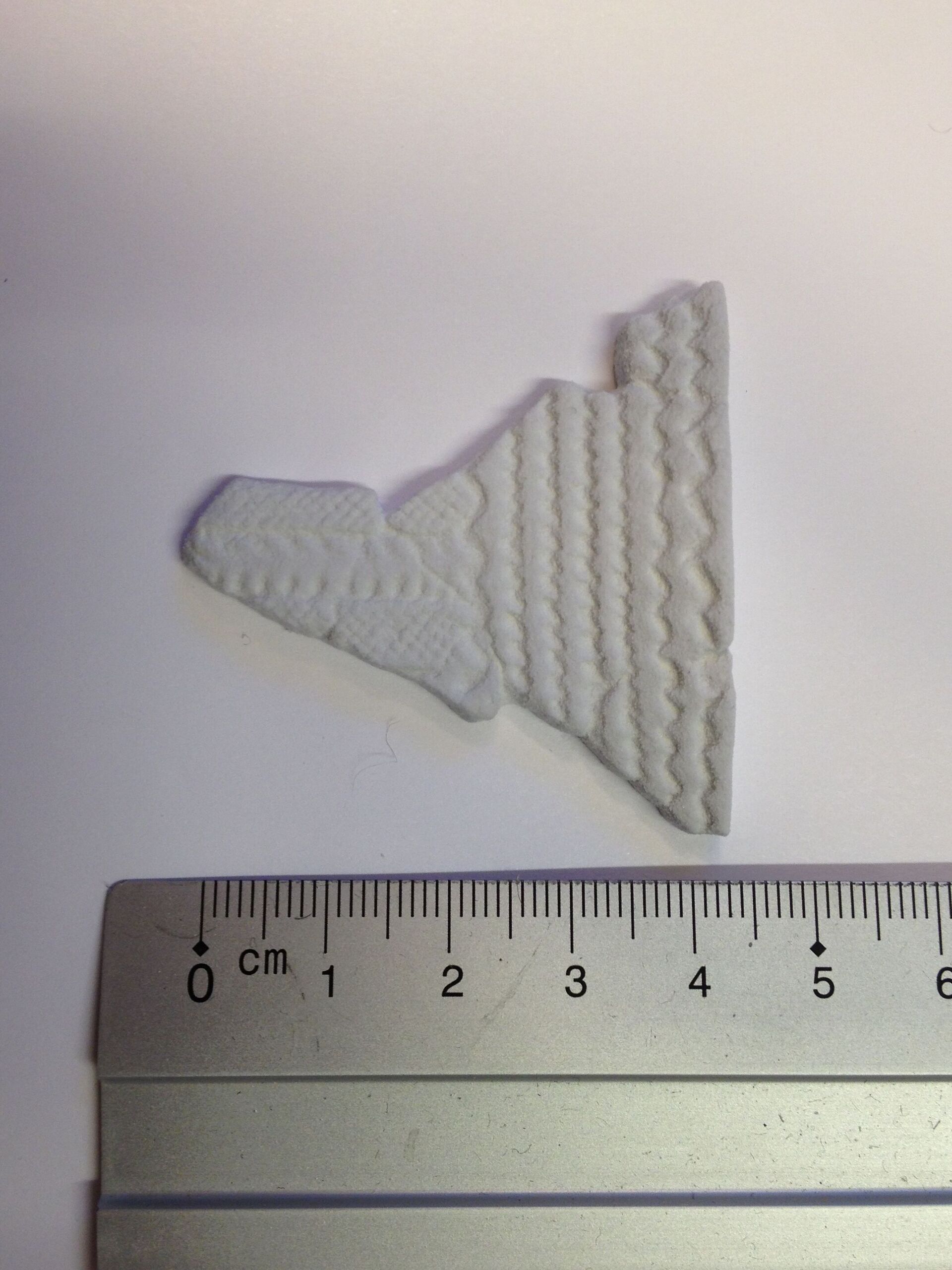Ancient potsherds digitized and 3D printed
3D scanning is used for final project about design of modern dinnerware
Helle Schou Petersen, student from Aarhus School of Architecture specializing in studiodesign/industrial design, wanted to use the Stone Ages design in a modern dinnerware for her final project.
Problem
The purpose of Helle’s project was to design a product for the Danish kitchen inspired by ancient design in Denmark.
Helle was allowed to borrow 5000 years old potsherds from Moesgaard Museum in Aarhus for reconstruction and integrate the design of potsherds in her new dinnerware. To be able to include the soul from contemporary design into the dinnerware it was important that all the details were on the new design.
Zebicon’s task was to 3D scan the potsherds so that every little detail was pictured in a 3D model that Helle could use to work on.
Solution
Zebicon scanned the potsherds, which were scaled down for half size and were afterwards 3D printed. Helle now had a new set of potsherds in the original pattern.
“As an industrial designer I find it fascinating that it is possible to 3D scan objects from the past and use the as fragments in a new interpretation through 3D IT-tools. It has been fascinating to work with Zebicon because they have broaden my horizon as a designer compared to what is technical possible” Helle explains about scanning with Zebicon.
The result of Helle's work was a protoype of the modern dinnerware with potsherd pattern integrated.
3D scanning is a technology, which can create a digital 3D model of a physical part. The technology is primarily used for reverse engineering or quality control and part measurement.










